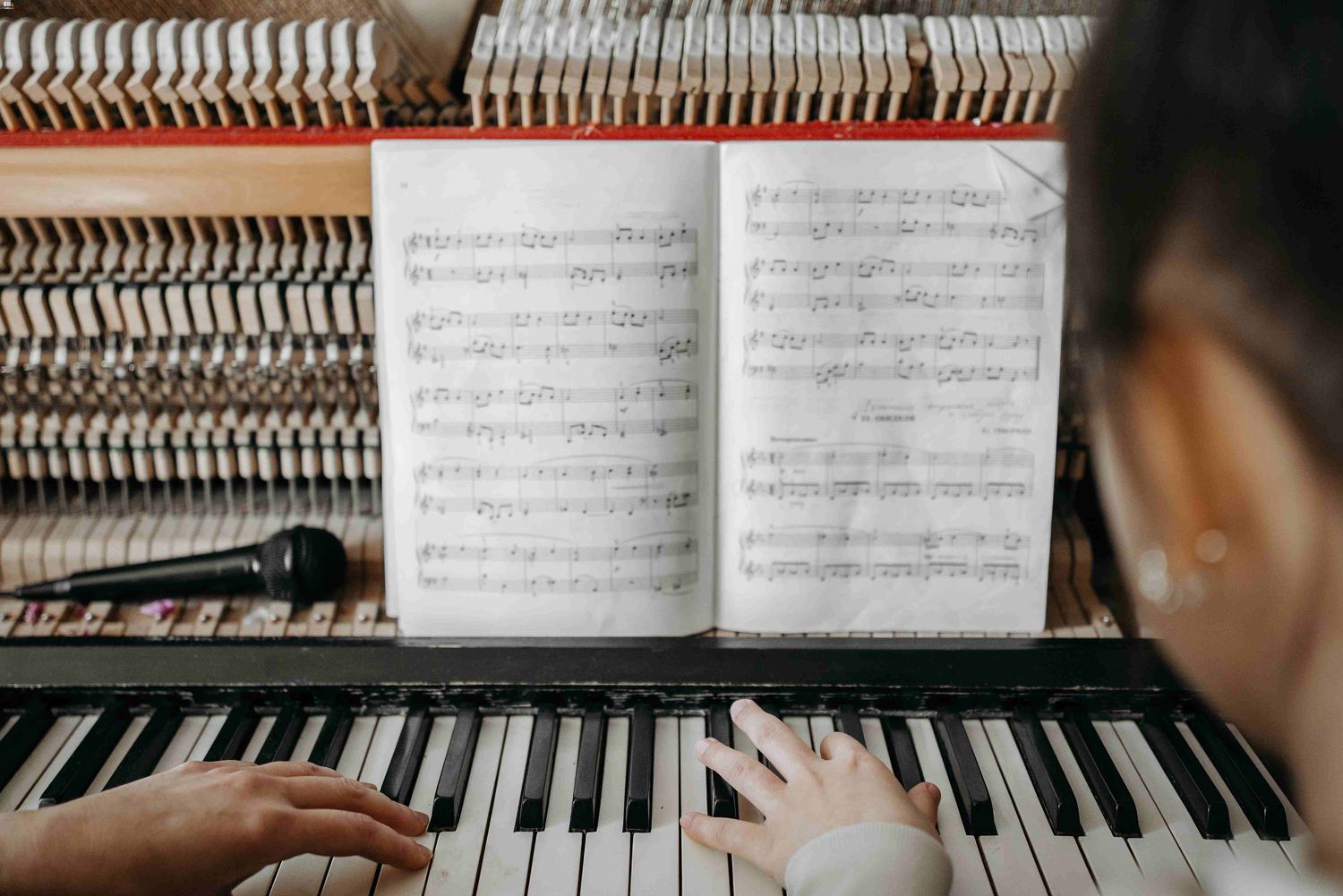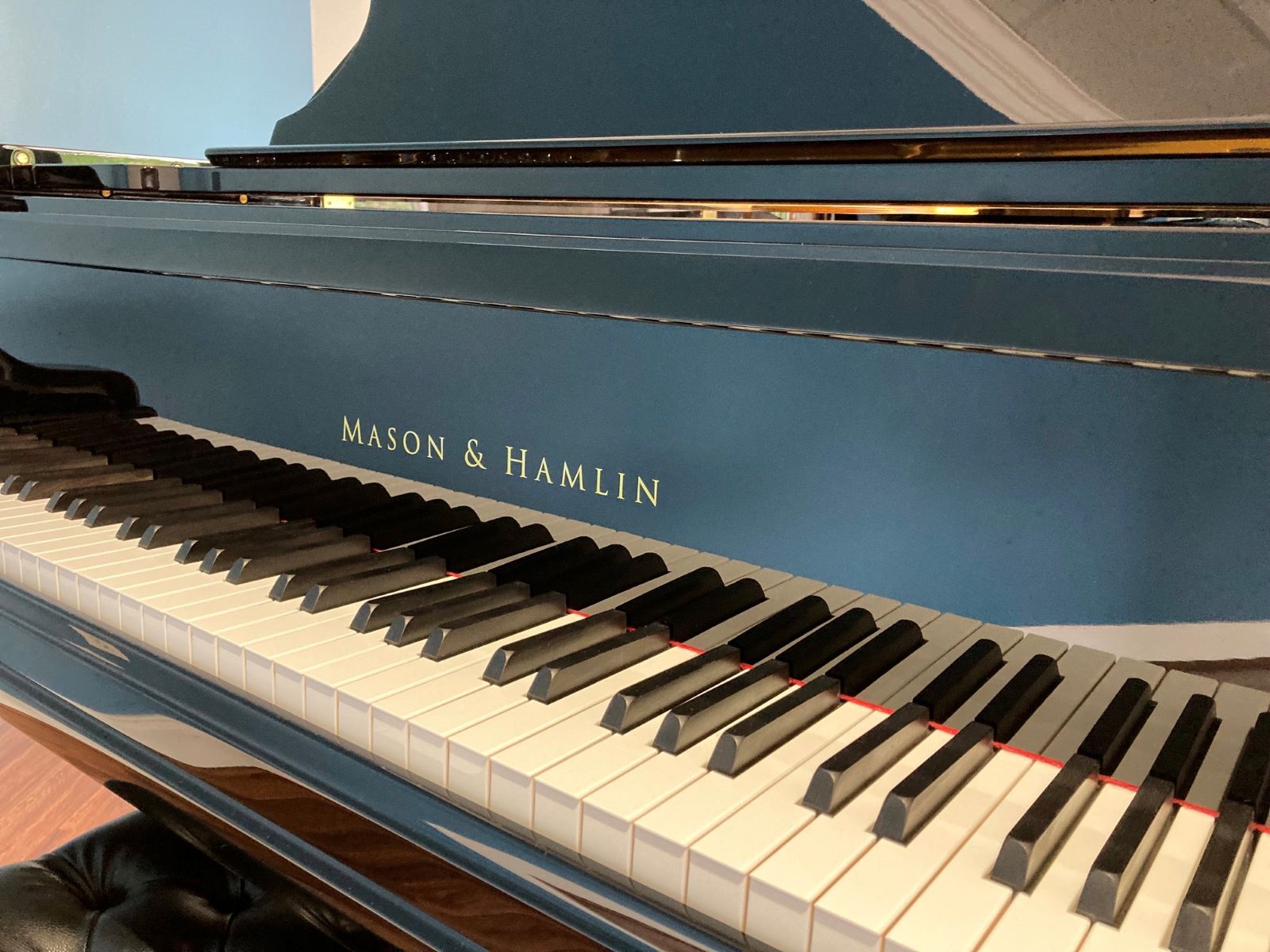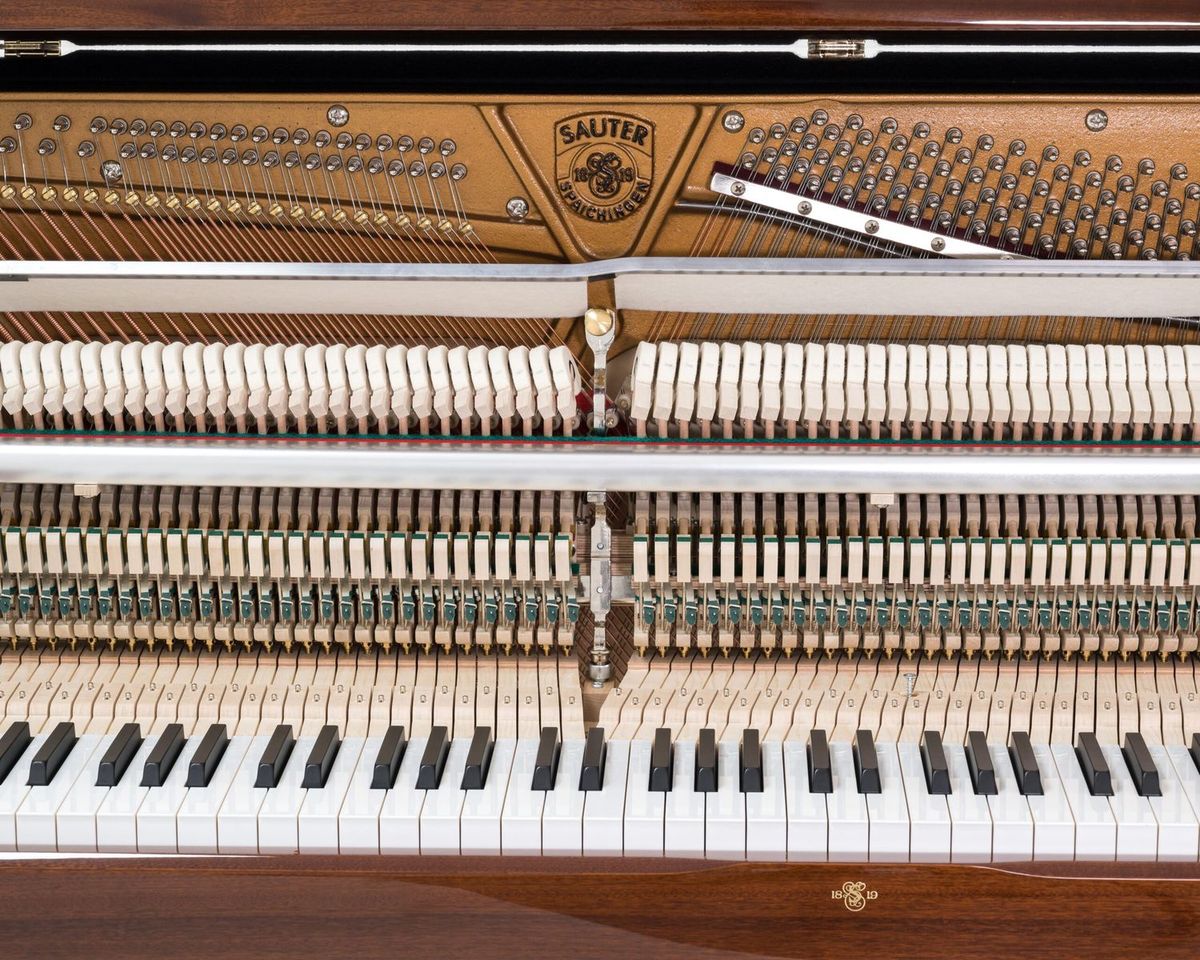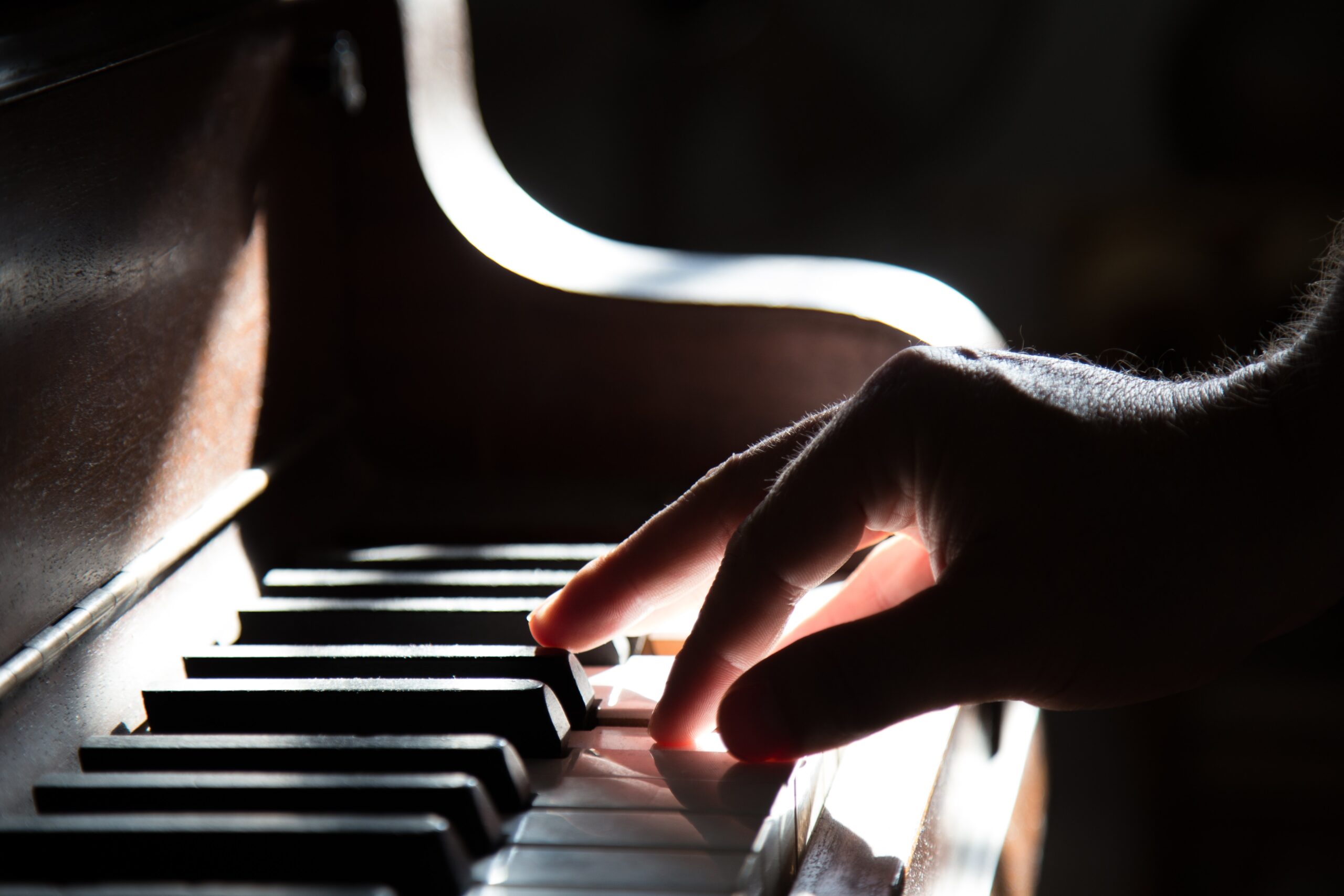Home>Instruments>Piano>What Is A Piano Recital


Piano
What Is A Piano Recital
Published: February 12, 2024
Discover the art of piano performance and the significance of piano recitals. Learn what makes a piano recital a unique and captivating musical experience. Explore the world of piano music and recitals.
(Many of the links in this article redirect to a specific reviewed product. Your purchase of these products through affiliate links helps to generate commission for AudioLover.com, at no extra cost. Learn more)
Table of Contents
Introduction
Piano recitals are captivating events that showcase the talent and dedication of pianists. These performances provide a platform for musicians to share their musical interpretations with an audience, creating a memorable and immersive experience for all involved. Whether it's a solo performance or a collaborative effort, piano recitals have a rich history and continue to hold a significant place in the world of music.
The anticipation and excitement leading up to a piano recital are palpable, both for the performers and the audience. The atmosphere is charged with a sense of artistic expression and the promise of a captivating musical journey. As the audience settles into their seats, the pianist prepares to convey a story through the eloquence of their playing, transporting listeners to a world of emotion and melody.
Piano recitals are not only a display of technical prowess but also a celebration of musical artistry and the power of storytelling through music. The allure of witnessing a pianist bring a composition to life, infusing each note with passion and purpose, is a testament to the enduring appeal of these performances. In the following sections, we will delve into the definition, history, purpose, planning, and execution of piano recitals, offering a comprehensive exploration of this cherished musical tradition.
Definition of a Piano Recital
A piano recital is a live musical performance that features a pianist or multiple pianists performing a selection of pieces on the piano. These performances can range from solo recitals, where a single pianist takes the stage, to ensemble recitals, which may include duets, trios, or larger groups of pianists collaborating on a program of musical works. The repertoire performed during a piano recital can encompass a diverse range of styles, including classical, contemporary, jazz, and other genres, allowing for a dynamic and varied showcase of musical expression.
One of the defining characteristics of a piano recital is its focus on the piano as the primary instrument, with the repertoire carefully curated to highlight the instrument’s versatility and expressive capabilities. The program typically features compositions specifically written for the piano, although arrangements of orchestral or chamber music pieces are also commonly performed, demonstrating the adaptability of the piano in interpreting a wide array of musical compositions.
Furthermore, piano recitals often serve as a platform for pianists to present their interpretations of renowned works by celebrated composers, as well as to introduce lesser-known or contemporary pieces to the audience. This diversity in repertoire allows pianists to demonstrate their artistic range and proficiency while offering the audience a compelling musical journey that traverses different periods and styles.
Moreover, piano recitals provide an opportunity for pianists to engage in musical storytelling, as they craft a cohesive and expressive narrative through their performances. Each piece presented during a recital contributes to the overarching musical narrative, inviting the audience to embark on an emotive and immersive experience guided by the pianist’s expressive interpretation and technical prowess.
In essence, a piano recital is a captivating musical event that celebrates the artistry of pianists and the evocative nature of the piano, inviting audiences to immerse themselves in the beauty and depth of the instrument’s repertoire.
History of Piano Recitals
The history of piano recitals is deeply intertwined with the evolution of keyboard instruments and the development of solo and ensemble piano performance. The emergence of the piano as a prominent instrument during the Baroque, Classical, and Romantic eras significantly influenced the trajectory of piano recitals, shaping their format and cultural significance.
The roots of piano recitals can be traced back to the 18th century, when public concerts featuring solo keyboard performances gained popularity across Europe. Renowned composers and virtuoso pianists, such as Wolfgang Amadeus Mozart, Ludwig van Beethoven, and Frédéric Chopin, played pivotal roles in elevating the status of the piano recital as a distinct and revered form of musical expression.
During the 19th century, the Romantic era witnessed a surge in the prominence of piano recitals, with composers and performers seeking to captivate audiences through emotionally charged and technically demanding solo piano compositions. This era saw the rise of legendary pianists, including Franz Liszt and Clara Schumann, whose groundbreaking performances and innovative approaches to piano playing contributed to the evolution of the piano recital as a compelling and influential art form.
Furthermore, the advent of public concert halls and the proliferation of piano manufacturing during the 19th century facilitated the widespread accessibility of piano recitals, allowing audiences from diverse social backgrounds to experience the artistry of pianists on a grand scale.
As the 20th century unfolded, piano recitals continued to evolve, embracing a broader spectrum of musical styles and expanding the repertoire to encompass contemporary and experimental compositions. Pioneering pianists such as Sergei Rachmaninoff, Art Tatum, and Glenn Gould pushed the boundaries of piano performance, infusing recitals with a spirit of innovation and exploration.
Today, piano recitals remain an integral part of the musical landscape, with virtuoso pianists and emerging talents alike captivating audiences with their interpretations of classical masterpieces, modern works, and cross-genre collaborations. The legacy of piano recitals endures as a testament to the enduring appeal and cultural significance of this cherished form of musical expression.
Purpose of Piano Recitals
Piano recitals serve a multifaceted purpose, encompassing artistic, educational, and cultural dimensions that contribute to the enrichment of both performers and audiences. These performances are not only platforms for pianists to showcase their technical prowess and interpretive skills but also serve as vehicles for artistic expression, community engagement, and the preservation of musical heritage.
One of the primary purposes of piano recitals is to provide pianists with an opportunity to present their musical interpretations and convey their artistic vision to a live audience. Through the selection and performance of repertoire, pianists communicate their unique perspectives on the works they present, inviting listeners to engage with the emotional depth and expressive nuances of the music.
Moreover, piano recitals play a vital role in nurturing the growth and development of pianists, offering them a platform to refine their performance techniques, stage presence, and communication skills. The experience of preparing for and performing in a recital cultivates resilience, discipline, and artistic maturity, contributing to the ongoing artistic and professional development of pianists at various stages of their careers.
From an educational standpoint, piano recitals provide audiences with opportunities to deepen their understanding of diverse musical genres, historical periods, and compositional styles. By attending recitals, listeners can broaden their musical horizons, gain insights into the interpretive approaches of different pianists, and develop an appreciation for the rich tapestry of piano repertoire spanning centuries of musical creativity.
Furthermore, piano recitals contribute to the preservation and celebration of cultural heritage, as they often feature works by renowned composers from various musical traditions. By presenting compositions from different eras and geographic regions, pianists pay homage to the legacy of musical innovation and creativity, fostering a sense of cultural continuity and historical reverence.
Additionally, piano recitals foster community engagement and social connection, bringing together audiences with a shared passion for music and providing a space for collective artistic experiences. Whether in intimate salon settings or grand concert halls, piano recitals create opportunities for individuals to connect through the universal language of music, forging enduring bonds and shared memories.
In essence, the purpose of piano recitals extends beyond the confines of individual performances, encompassing a broader mission of artistic expression, education, cultural preservation, and community enrichment. These multifaceted purposes underscore the enduring relevance and significance of piano recitals in the contemporary musical landscape.
Planning and Preparation for a Piano Recital
The successful execution of a piano recital is intricately linked to meticulous planning and thorough preparation, encompassing a range of artistic, logistical, and promotional considerations. From repertoire selection and rehearsal strategies to venue arrangements and audience engagement, the planning and preparation phase plays a pivotal role in shaping the overall impact and success of a piano recital.
Central to the preparation process is the thoughtful curation of the recital program, which involves selecting a diverse and cohesive repertoire that showcases the pianist’s artistic range and resonates with the intended audience. Pianists often draw upon a combination of established masterpieces, lesser-known gems, and contemporary works, crafting a program that balances technical virtuosity with emotive storytelling and thematic coherence.
Rehearsals form the cornerstone of a pianist’s preparation for a recital, providing dedicated time for refining interpretation, honing technical proficiency, and cultivating a deep understanding of the musical nuances within each piece. Through disciplined and focused rehearsal sessions, pianists strive to internalize the repertoire, cultivate expressive depth, and attain a level of mastery that enables them to convey their artistic vision with confidence and conviction during the performance.
Logistical aspects, such as securing a suitable venue, coordinating technical requirements, and managing promotional activities, are integral components of the planning phase. Pianists and event organizers collaborate to ensure that the chosen venue aligns with the acoustical and atmospheric needs of the recital, creating an optimal setting for the audience to engage with the music. Additionally, effective promotion and audience outreach efforts are essential for maximizing attendance and fostering community interest in the recital.
Furthermore, the planning and preparation phase encompasses considerations related to stage presence, attire, and communication with the audience. Pianists deliberate on aspects of performance etiquette, visual presentation, and verbal engagement, seeking to create a welcoming and immersive experience that resonates with the audience on both artistic and interpersonal levels.
Ultimately, the meticulous planning and thorough preparation for a piano recital are driven by a commitment to delivering a compelling and memorable musical experience. By attending to artistic, logistical, and audience-oriented elements, pianists and event organizers endeavor to create an environment where the transformative power of music can unfold, leaving a lasting impression on performers and audiences alike.
The Performance
The culmination of meticulous preparation and artistic dedication, the performance phase of a piano recital is a transcendent and transformative experience that unfolds on the stage, captivating audiences and inviting them into a world of musical storytelling and emotive expression. As the pianist takes their place at the instrument, a palpable sense of anticipation fills the air, heralding the commencement of a musical journey that transcends time and space.
The performance begins with an evocative overture, as the pianist’s hands gracefully navigate the keys, ushering in the first notes of the program. Each composition is imbued with the pianist’s interpretive insights, technical finesse, and emotional depth, inviting listeners to embark on a sonic odyssey that traverses a spectrum of moods, colors, and narrative arcs. From the delicate lyricism of tender melodies to the thundering resonance of virtuosic passages, the pianist’s performance unfolds as a tapestry of musical expression and technical prowess.
Throughout the recital, the pianist’s stage presence and communicative gestures serve to enrich the audience’s engagement with the music, fostering a sense of connection and shared emotional resonance. Whether through subtle nuances of phrasing, expressive gestures, or moments of introspective stillness, the pianist invites the audience to partake in the unfolding narrative, forging a profound and intimate bond between performer and listener.
As the program reaches its climax, the pianist guides the audience through a crescendo of musical intensity, culminating in a climactic denouement that leaves a lingering imprint on the senses. The final notes reverberate through the performance space, eliciting a collective breath of awe and reverence from the audience, who have been transported on a transformative journey through the pianist’s artistry.
Following the last resonant chord, the audience erupts into applause, expressing their appreciation for the pianist’s performance and the emotional resonance of the musical experience. The pianist acknowledges the audience’s applause with humility and gratitude, embodying the profound connection forged through the shared language of music.
In essence, the performance phase of a piano recital transcends the confines of a mere musical presentation, evolving into a profound and immersive artistic encounter that resonates with the hearts and minds of all in attendance.
Conclusion
Piano recitals stand as timeless tributes to the artistry, innovation, and emotional resonance of piano music. From the meticulously curated programs to the transformative performances that unfold on stage, these events encapsulate the enduring allure and cultural significance of the piano as a vehicle for artistic expression and storytelling.
As we have explored the definition, history, purpose, planning, and performance of piano recitals, it becomes evident that these events serve as immersive conduits for the convergence of musical heritage, artistic interpretation, and communal engagement. The rich tapestry of repertoire, spanning classical masterpieces, contemporary works, and diverse genres, underscores the piano’s versatility and enduring relevance in the contemporary musical landscape.
Moreover, the history of piano recitals reflects the evolution of solo and ensemble piano performance, showcasing the enduring legacy of virtuoso pianists and the cultural resonance of the piano as a cherished instrument. From the salons and concert halls of centuries past to the modern stages of today, piano recitals continue to captivate audiences and perpetuate the tradition of musical excellence.
The purpose of piano recitals extends beyond the confines of individual performances, encompassing a broader mission of artistic expression, education, cultural preservation, and community enrichment. These multifaceted purposes underscore the enduring relevance and significance of piano recitals in the contemporary musical landscape, fostering connections between performers, audiences, and the rich tapestry of musical heritage.
In conclusion, piano recitals epitomize the transcendent power of music to unite, inspire, and elevate the human spirit. These events serve as testimonies to the enduring legacy of pianists, composers, and musical innovation, inviting audiences to partake in a shared journey of artistic discovery and emotional resonance. As the final notes fade into the ether, the legacy of piano recitals endures as a testament to the timeless allure and cultural significance of this cherished form of musical expression.











